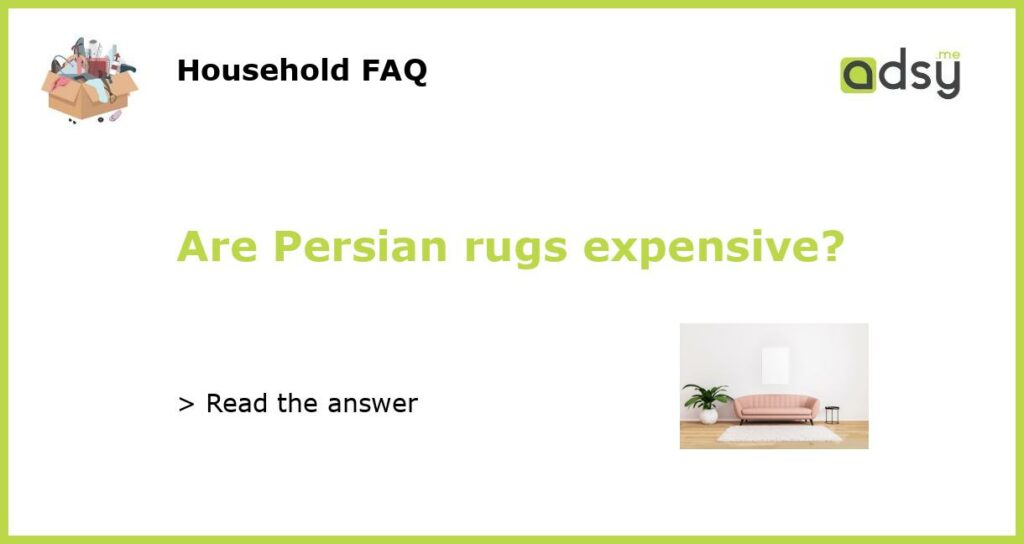What Determines the Price of Persian Rugs?
Persian rugs are world-renowned for their intricate designs and exceptional craftsmanship. They are considered to be one of the finest types of rugs available, but are they expensive? The answer is yes, Persian rugs can be quite costly. However, several factors determine the price of these rugs. Let’s take a closer look at what makes Persian rugs expensive.
Rarity and Age
One of the primary factors that contribute to the high price of Persian rugs is their rarity and age. Authentic Persian rugs are handwoven by skilled artisans in Iran, using traditional methods that have been passed down through generations. The weaving process is time-consuming, and it can take several months or even years to complete a single rug. As a result, Persian rugs are produced in limited quantities, which makes them more valuable and expensive.
Additionally, the age of a Persian rug also affects its price. Older rugs are considered to be more valuable because they have been around for a longer time and have stood the test of time. Antique Persian rugs, particularly those that are well-preserved and in good condition, can fetch significantly higher prices at auctions and in the market.
Quality of Materials
The quality of materials used in Persian rugs also plays a crucial role in determining their price. Traditional Persian rugs are typically made from natural materials such as wool, silk, and cotton. The finest and most expensive Persian rugs are crafted from hand-spun and hand-dyed wool, which gives them a rich and lustrous appearance.
Silk Persian rugs are even more luxurious and expensive due to the intricate weaving techniques required to create them. Silk rugs are known for their softness, sheen, and delicate patterns. However, the higher cost of silk as a material contributes to the overall price of these rugs.
Design Complexity
The complexity of the design is another significant factor that affects the price of Persian rugs. Traditional Persian rugs feature intricate patterns, such as floral motifs, geometric shapes, and intricate medallions. The more detailed and complex the design, the more time and skill it requires to weave. This increases the overall cost of the rug.
Moreover, Persian rugs with rare or unique designs can be exceptionally expensive. Certain patterns and motifs, such as the Persian hunting design or the Tree of Life design, are highly sought after by collectors and enthusiasts. The rarity and exclusivity of these designs significantly drive up their prices.
Size of the Rug
The size of a Persian rug also plays a role in its price. Larger rugs require more materials and take longer to weave, which can increase their cost. The cost per square foot or square meter of a Persian rug tends to decrease as the size increases. This means that larger Persian rugs can be relatively more affordable compared to smaller ones.
However, it’s important to note that exceptionally large or oversized Persian rugs can also be quite expensive due to their rarity. Large rugs are harder to find and require larger looms and more intricate weaving techniques. This makes them more valuable and drives up their price.
Persian rugs are indeed expensive, but their high price is justified by their exceptional quality, rarity, age, and intricate designs. These factors contribute to the allure and prestige associated with Persian rugs. Whether you are a collector, an art enthusiast, or simply appreciate the beauty of these rugs, owning a Persian rug can be a worthwhile investment.






